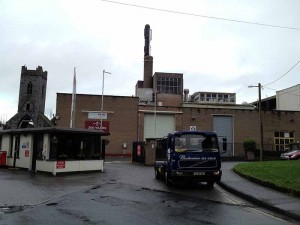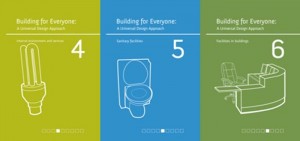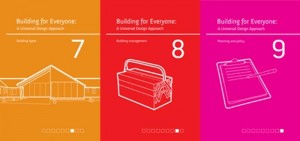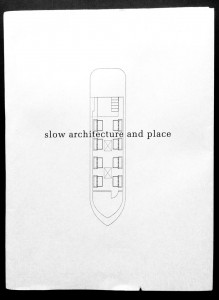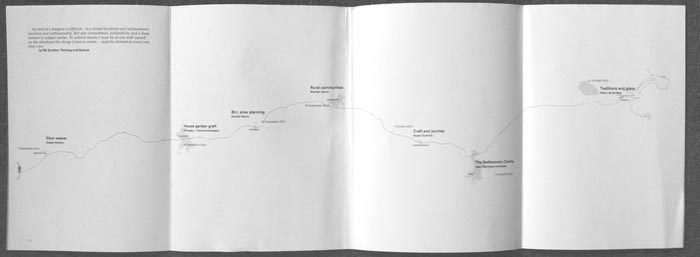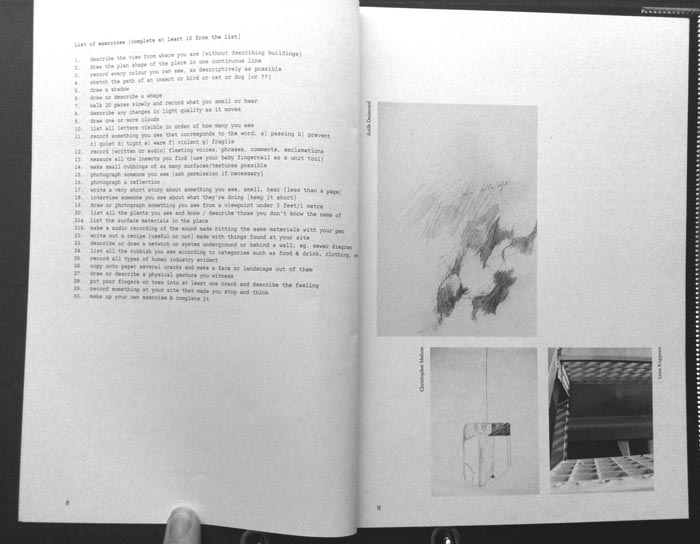Review of presentation on future of Smithwick’s Brewery site, Kilkenny
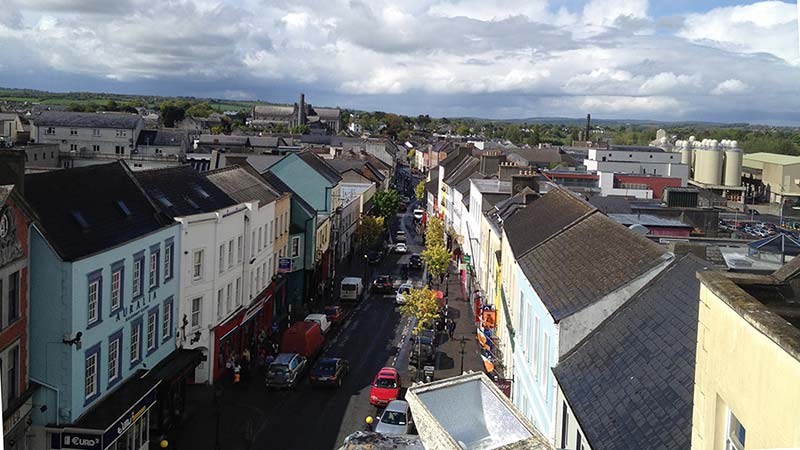
There was a semi-public presentation yesterday evening in Kilkenny Castle regarding the future of the Smithwick’s brewery site in Kilkenny city. The site is located at the heart of Kilkenny city, and a sensitive design and zoning is essential so that Kilkenny can be subtly improved without changing its character completely.

High Street, Kilkenny, with brewery site to the right and St Canice’s Cathedral to the rear on the left
The mayor Seán O hArgain started out by emphasising the new approach the Councils had taken in approaching the RIAI and asking for their help. A ‘Colloquium’ was established, with a multidisciplinary team in discussions. We were delighted to hear that the Council took a far sighted approach to the site, partially helped by the current building slowdown (or standstill, as some would say). The mayor & the RIAI President, Michelle Fagan spoke strongly about how taking the time to get this right is essential.
A common theme in all the presentations was how essential it is to do something with the Dunnes car park. The comparison with Edinburgh was made by several, and ‘the money shot’ as it was described by Seán Harrington, of the Castle being at the foot of the car park, without easy access. One thing seemed clear, there is consensus that some form of river walk is essential, from the brewery site, across the Dunnes car park to the Canal Walk.
Most also talked about the original plots of land, and suggested echoing those lines & plots that were perpendicular to the river. Rocques Map of Kilkenny was used to illustrate the original plots.
There was also consensus on the need for new bridges across the river, both pedestrian and for cars, though the locations varied.
Jim Pike of O’Mahony Pike started off with some out of date plans of Kilkenny, referring to parking spots in Kilkenny, for example, which no longer exist. It somehow felt as though he didn’t know Kilkenny very well, which was surprising, as O’Mahony Pike are involved in the new Central Access Scheme. He talked a lot about the new bridge and how it would fit into to Kilkenny. While I strongly agree Kilkenny needs a new bridge, his presentation did not convince me; the images he showed looked like prioritising cars was the only thought. The drawings he presented were difficult to read on the projected screen, hopefully the council will make them available on their site.
Seán Harrington of Howley Harrington Architects gave a clear presentation and showed some great graphics, and had a terrific idea about turning the Town Hall into a Tourist Information Centre. Now that the Borough Council is being de-commissioned, this seems an excellent use of a public landmark. His idea of a tower in the Irishtown car park to echo St Canice’s Tower around the corner though was maybe a little indulgent. The cynic in me did smile at the thought of an architect suggesting a commission, but that is probably unfair. The site of the car park is a strategic one and certainly merits some greater consideration. His idea of a boardwalk along the river seemed a little at odds with his earlier thoughtful analysis of historic plotlines, though his vision as described in a photo montage was appealing.
Tony Reddy of Anthony Reddy Associates gave an impassioned speech on the importance of Kilkenny attracting new businesses, and described a new knowledge quarter with mixed use in the Brewery site. He talked about a grid of streets and squares, with an appropriate scale. His talk felt more about business than design.
Niall McCullough of McCullough Mulvin, though for some reason confusing everybody with maps that were ‘upside down’ compared with both convention and everyone else, suggested that the site of the abbey be excavated first. This seems like an excellent idea, especially if it could be done in tandem with the river walk. The Abbey could provide part of the focal point that Seán Harrington had pointed out was missing midway on the walk to St Canices Cathedral.
Shelley McNamara of Grafton Architects was the last to speak, which was unfortunate, as people were beginning to shuffle their feet after 2 hours of presentations. She spoke of her ‘outsider’ status, saying that unlike the other presenters, she had not worked in Kilkenny previously. She described how this allowed her look at Kilkenny with fresh eyes. She covered quite a lot in a short period of time, I only have some edited highlights. She was the first to mention the contours of the site, and how the site slopes down from High Street to the river. She emphasised that it was essential to think in three dimensions, which made a pleasant change.
She talked about a organically shaped park almost threading along by the river. This made me think of a sort of park similar in idea to the High Line park in New York, weaving along the banks of the river, expanding in places, instead of the linear boardwalk idea referred to by Seán Harrington.

Olmsted – Buffalo Park referred to by Shelley
She also had some thoughts on approaching the city by river, and I think she lost her audience here. Kilkenny as an inland city is unlikely to have more than dedicated kayakers arriving. Her images of a transformed Galway were lovely, if a little irrelevant.
My attention was caught again when she started discussing how to humanise the new road which will be elevated over the brewery site. She showed some examples of streets in Barcelona where traffic co-exists happily with pedestrians. I found it difficult to reconcile the images Jim Pike had shown with Shelley’s description of how it should be a new street, rather than a road and that it should feel part of the city. Maybe Grafton Architects could do some consulting work on the new road and bridge.
She had a couple of last, almost throwaway comments -one referred to a crowd funded pedestrian bridge in Rotterdam. Crowd funding has become a very popular way to fund arts projects (as Kilkenny’s own Devious Theatre knows well). In this project, your donation bought a piece, on which you could have any message engraved. I can’t see why this model shouldn’t apply to Kilkenny. There is a huge art scene here due to the good work that has been set in place over the last 50 years.
The other last item was to do with temporary occupancy of the site. A recent trend in Dublin and closer to home is for ‘pop up’ shops. Short term lets allow start ups a chance to get a visible presence with minimal initial outlay. Artists could occupy part of the site for Arts Week, musicians could have gigs in the existing buildings, carpenters could use some units as workshops. This deserved a bit more discussion than to be neglected at the tail end of a long overall presentation.
Seán O hArgain noted that the videos of each of the presentations will be available on the Council’s website on Monday. He also stressed that submissions from any member of the public are welcome.
A good start. Tús maith, leath na hoibre.
BOOK LAUNCH : BUILDING FOR EVERYONE
February the 23rd was a busy day for the fairly tidy world of Irish architectural publishing, with Slow Architecture and Place launched that evening, and Building for Everyone appearing in the early afternoon. Minister Phil Hogan was on hand to begin the formalities, and remind us of the progress of the government in building regulation – particularly referring to the recent amendment of Part M – now, much more sensibly, titled Access and Use.
The new Building for Everyone replaces the 2002 edition, which, as architect and RIAI president Michelle Fagan pointed out from her own experience, was never available on the office shelf and always at somebody’s desk. It has been in development for over 3 years by the Centre for Excellence in Universal Design, principally by Neil Murphy, their senior built environment advisor , and director Dr Ger Craddock. There were scores of individuals and bodies involved in helping this guide to get to publication – even I worked on the edges of it, comparing its guidance to the new Part M and legislation from other jurisdictions.
The big advantage of this guide is the comprehensive guidance it offers. This book seeks to help building professionals undertake a Universal Design approach to building design, an approach that looks to go beyond legislative minimums and to fully include the needs of all people, regardless of their age, size, or ability, as far as this is possible. It offers guidance on all areas of buildings, and explains what this advice is reflecting, and who is being considered.
The book has now become a series – there are nine booklets dealing with different building types and aspects of the building process – this includes a booklet dedicated to an inclusive approach to the planning process. Areas around buildings and streetscapes, as well as some observations on routes through landscape, are detailed here. The series examines and offers specific advice upon how people get into buildings; how they orient themselves within buildings; how they might circulate around them; how people access the various facilities a building, and then goes into detail on a range of facilities include toilet and changing areas, food preparation and dining areas, auditoria and sleeping areas.
Building for Everyone separates approaches for different building types (in Booklet 7), including single dwellings and more public buildings, and even deals with how buildings can effectively be managed – one of the most difficult and disheartening aspects of creating inclusive buildings is realising that the design strategies are severely undermined by the way the spaces and building services are being used and maintained.
There is an acceptance that Universal Design is a process in itself – the authors have committed to updating Building for Everyone in its pdf edition regularly, in response to new research and input from different building users and advocates.
The full series of books deals with:
- External environment
- Entrances and Horizontal Circulation
- Vertical Circulation
- Internal Environment and Services
- Sanitary Facilities
- Facilities
- Building Types
- Building Management
- Planning
- Index and Terminology
- Entire Series; Booklets 1 – 10
It is available for free online, or a printed edition is available – for information on the print edition and availability contact the Centre for Excellence in Universal Design. Make sure you have enough room on your shelf though, there are almost a thousand pages to fit!
BOOK LAUNCH: SLOW ARCHITECTURE AND PLACE
I was at the launch on the 23rd of February (2012) of the book Slow Architecture and Place, which was a considered response to the Slow Architecture exhibition that took place during the summer of 2010 and the Autumn of 2011.
In this case ‘launch’ was about as apt a term as you can get, as the exhibition had been located on a barge boat and floated off down the Grand Canal from the river Shannon to Dublin, creating temporary exhibition spaces along its route. Part of its mission was to get school children involved as much as possible, which was helped by interactive and participative works from exhibition pieces such as Slowweave (Caelan Bristow), Draw (Architectural Farm), Thinking Town (Solearth) and Life-cycle (Sonairte).
Artists Róisín de Buitléar and Susan Jane Dunford responded to the idea of slow, and to the physical manifestation of the exhibition through their pieces, while also examining building materiality and effects of time upon it.
Architects Donaghy + Dimond, Sean Harrington, Michael Carroll, Carson Crushell Architects and Emmet Kenny responded with studies at a range of scales, from the close analysis of the materiality and form of a town house extension (Donaghy + Dimond) to the making of a town (Emmet Kenny); and analysis using time as the focus in the approach to architecture, in the process of designing built environments, and in constructing buildings and places. These exhibits ranged from considering urban situations to the isolation and fragmentation of rural communities – as well as the potential for more flexible and mobile water-borne archetypes.
The book contains four reflective essays, variously pitched as reactions to the exhibition and to the idea of slow architecture. The term slow architecture purposely and provocatively is left without a clear definition; this definition was asked for from the contributors themselves, and the same challenge is accepted by essayists Mike Haslam, Brian O’Brien, Ciaran Cuffe and Donal Hickey who draw on their experience as architects, design educators and, particularly in the case of the former Minister of State Ciaran Cuffe, politics. Instead, slow is split into a series of disparate themes relating to, as Mike Haslam puts it, “the joy of making and building, the care in the choice of materials, engagements with a community, the vision of a town [or national] plan or even a way we look at our environment”.
A number of the contributors made critical reference to the recent collapsed economic and building boom (the p-recession, as it were), and nailed the accusation of haste to it as a major contributing factor, which according to Donal Hickey “precluded any rational reflection on its value”. Donal sees the challenge of slow architecture as one of producing advocates (amongst architects), and encouraging activism. Brian O’Brien advocates slower design and slower building, pointing toward the cathedrals of medieval Europe and 20th Century Barcelona, and noting that fully understanding the people who will use buildings, and the material and social culture within which they will exist, can only be achieved in a slowed down process. Ciaran Cuffe reminds us that small scale and considered approaches are working in the food and wider agriculture sector, and that the wider societal role of architecture is being addressing by government through tighter energy conservation regulation and through the Government Policy on Architecture (2009-2015).
The question of what slow architecture remains open, and hopefully will continue to spark debate, now that time has become a commodity that can be afforded once more. The rush to get things built now! was driven by the conscious realisation by developers that the boom would come to an end, but without any projected sense of what the built legacy would be. Now that legacy is being appraised, but it will take time to figure out how to unpick our mistakes – this publication is as good a place as any to start.
I was delighted to be involved (in a marginal capacity) with curating this exhibition, and despite this bias would recommend Slow Architecture and Place as a timely reflection, floating on “calmer waters” as a counterpoint to the “economic turbulence” we are facing, and in the aftershock of some crazy ad-hoc development. It is available from the RIAI bookshop on Merrion Square, or you can email info@slowarchitecture.ie for more information.


